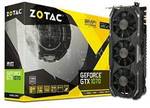Ships in 1-3 weeks. Also due to Pound taking a pound, its quite price competitive with Amazon USA.
Using GBP to AUD 1.8 conversion rate to get the estimate.
Still more than $100 cheaper than local stock: http://staticice.com.au/cgi-bin/search.cgi?q=gtx+1070&spos=1

 CamelCamelCamel
CamelCamelCamel Keepa
Keepa
I expect this card will get cheaper in the next 24 hours.
Amazon is supposed to update their exchange rates each day. The pound fell against both the AUD and USD yesterday, but they haven't changed the rates yet…